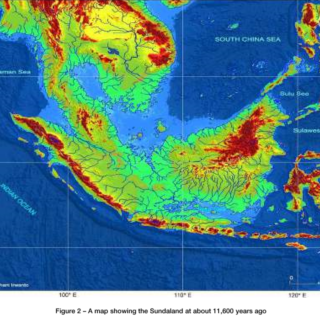Spanish Stonehenge
An Extreme Drought Has Revealed a ‘Spanish Stonehenge,’ a Mysterious Circle of Megaliths Once Hidden Beneath a Reservoir
The Dolmen de Guadalperal are 7,000 years old.
 |
| Photo of the Dolmen of Guadalperal. Courtesy of Ruben Ortega Martin, Raices de Peraleda. |
If there’s even the slightest silver lining to the ravages of climate change, it’s that the warming conditions are revealing some previously unknown archaeological sites and artifacts.
This past summer, an extreme drought in the Extremadura area of Spain that caused the Valdecañas Reservoir’s water levels to plummet has revealed a series of megalithic stones. Previously submerged underwater, the Dolmen de Guadalperal, often called the Spanish Stonehenge, are now in plain sight.
Though the Dolmen are 7,000 years old, the last time they were seen in their entirety was around 1963, when the reservoir was built as part of Franco’s push toward modernization. Now, residents near the province of Cáceres are thrilled to witness the surreal return of the ancient site.
Angel Castaño, who lives near the reservoir and serves as the president of a Spanish cultural group, told the website The Local, “We grew up hearing about the legend of the treasure hidden beneath the lake and now we finally get to view them.”
 |
| Photo of the Dolmen of Guadalperal. Courtesy of Ruben Ortega Martin, Raices de Peraleda. |
The approximately 100 menhirs are, like Stonehenge, hulking megalith stones—some standing up to six feet tall—that are arranged in an oval and appear oriented to filter sunlight. Evidence suggests that these stones could actually be 2,000 years older than Stonehenge.
Castaño is working with the group Raices de Peraleda to move the dolmen before rains come and re-submerge them. “Whatever we do here needs to be done extremely carefully,” he said, since the granite is porous and subject to further erosion. “It may cost money, but we already have one of the most difficult things to obtain, this incredible historic monument… money is the easy part. The past can’t be bought.”



Comments
Post a Comment